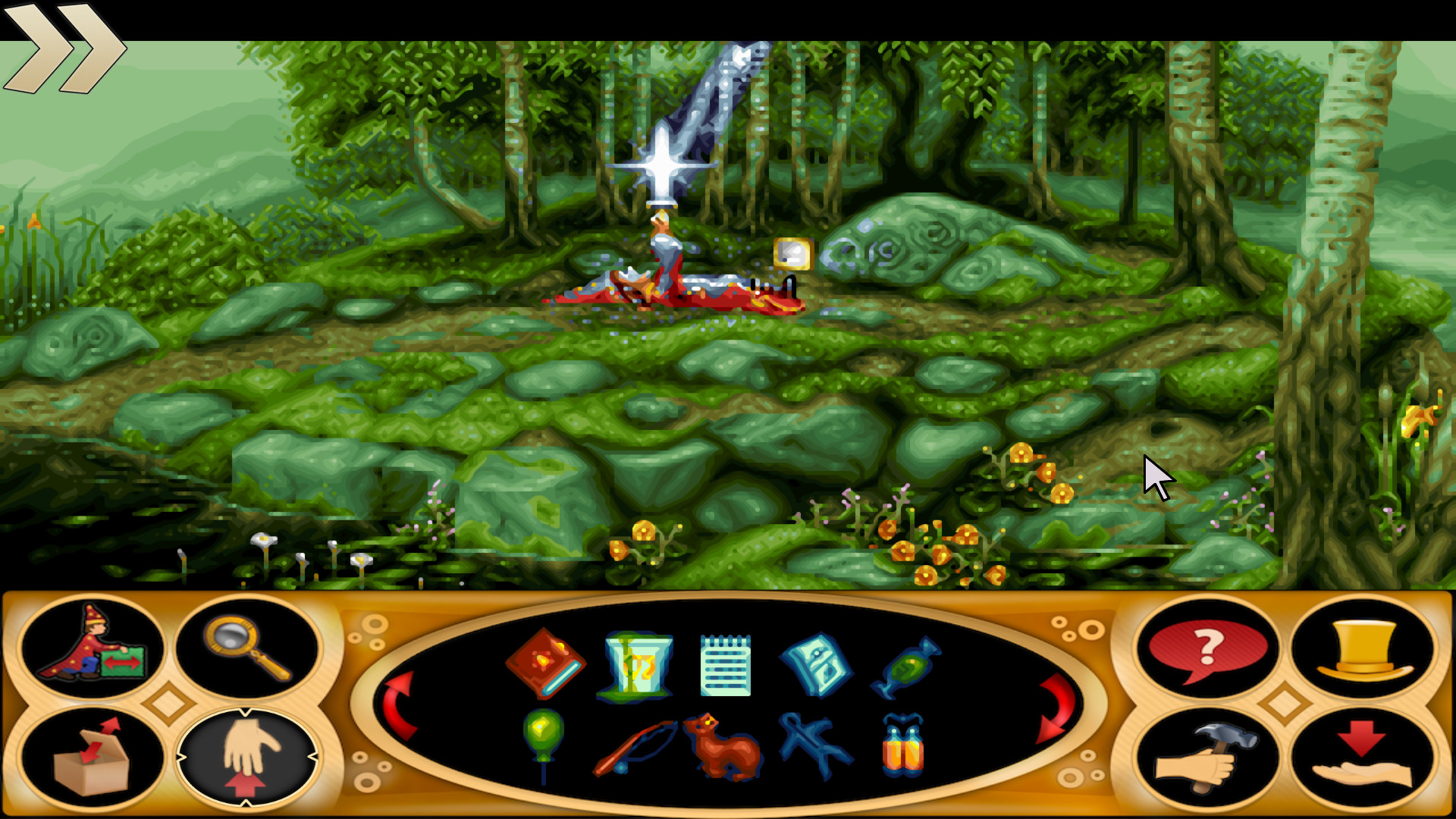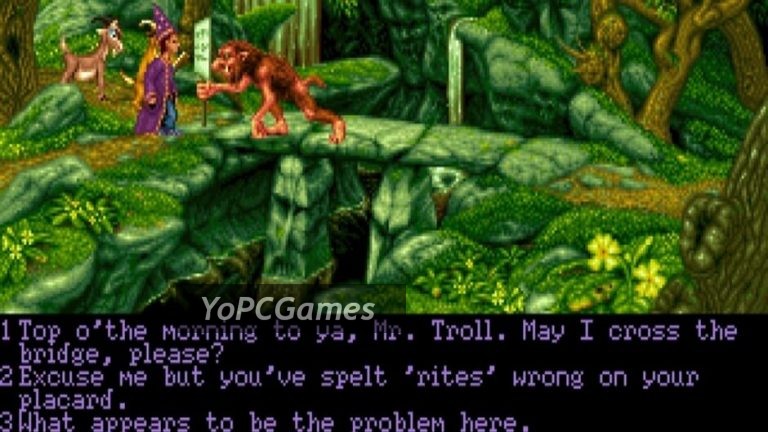
(The game uses a simplified version of LucasArts’ classic verb-picker.) Gags are written for everything, and it’s often worth talking to inanimate objects just to find all the most unlikely actions for which lines have been written. Every scene, and there are so many scenes, is crammed with items to look at, pick up, use or talk to. Most exciting for me is the astonishing amount of detail. (I’m looking at you, wet bread from the bakery.) Far too often you’re expected to just guess to go back to an old dream, with no prompts that anything would or should have changed there. Where I have been frustrated is when those solutions have required my noticing an object that can only be picked up in very specific circumstances, that stumbling upon would have required a ridiculous number of permutations. Of course, getting stuck is a vital part of classic adventures, and I’ve honestly not been bothered by needing to look at a walkthrough every now and then: that’s just in keeping with the 90s format.

The result of all this is a superbly crafted adventure game, with a lot more going on in it than you’d usually see, but then at the same time an awful lot of complication that can see you getting stuck. Aaaaaaand, on top of all this, you can further influence the dreams with the objects on Lucy’s bedside table, like her fan. Each progression marks a new chapter in the game, although you can always return to older dreams to get missed items or try other combinations. But a book of venus flytrap jokes and a worn old teddy has her at a plant-based comedy club, accompanied by a miserable full-size bear.īy mixing and matching these items, you can help Lucy find items to help her progress through her main nightmare, dreamt when her dream box isn’t placed by the bed. So a book about crabbing, and a fluffy duckling, has Lucy dreaming she’s at a beach, occupied by sentient crabs, accompanied by an enormous floating duck. Lucy has a dream box that when placed next to her bed, and filled with “inspiring literature” (books on specific topics) and “companions” (cuddly toys), that then influence the nature of her dreams. This is interspersed with Lucy’s dreams, which are themselves a whole other complicated, interweaving set of puzzles. This eventually finds you investigating a decade-old murder, in between resolving all sorts of situations that require juggling inventory puzzles, conversations with its broad cast of characters, and darting about town convincing everyone to give you vital items. Your goal, throughout this elaborate story, is to resolve the issues in her dreams, while also exploring the town of Figgington, a Yorkshire-ish community of village fetes, local shops and satanic libraries. To change these controls and more, use the Keymaps tab in the global or game-specific settings.Lucy is a very confident child of indeterminate age, living in what might be early 90s Britain, who is plagued by repeating nightmares.

For more information, see the user documentation

The following language choices are available when using command-line arguments or the "Language" option in the game-specific settings.
CRAB SIMON THE SORCERER 2 WINDOWS
Note: If you have the dual version of Simon the Sorcerer on CD, you will find the Windows version in the main directory of the CD and the DOS version in the DOS directory of the CD. For more information on how ScummVM uses game data files, see the user documentation.


 0 kommentar(er)
0 kommentar(er)
